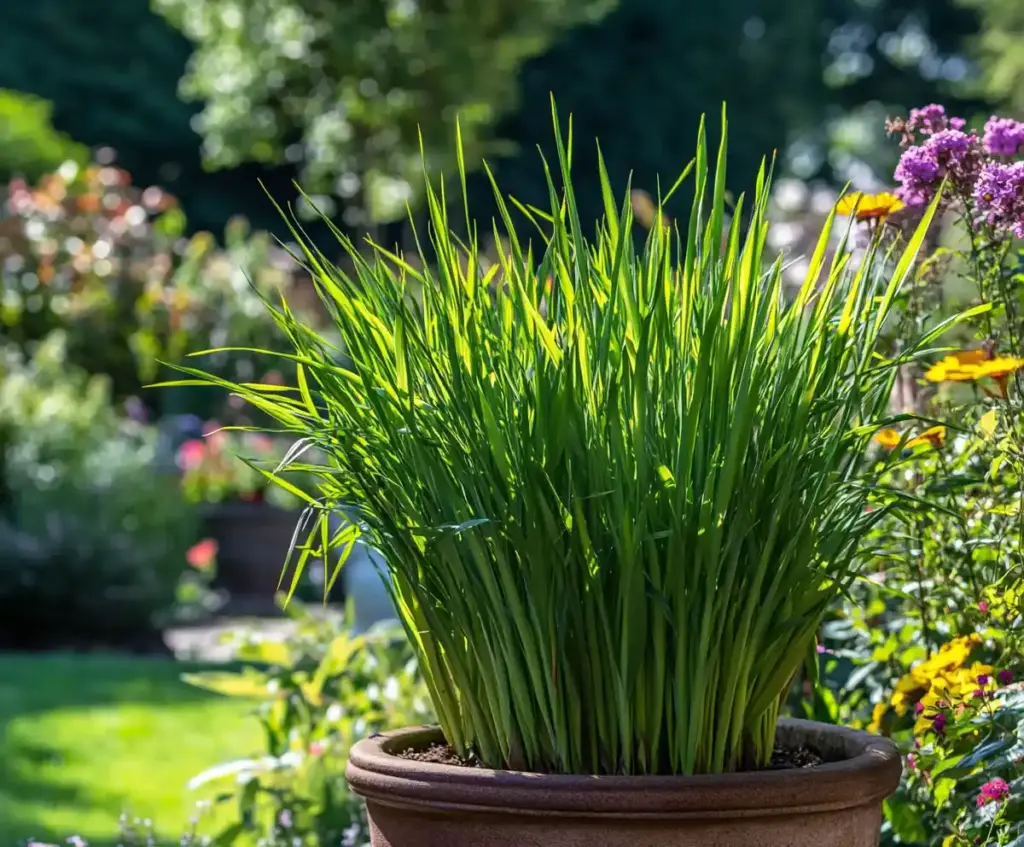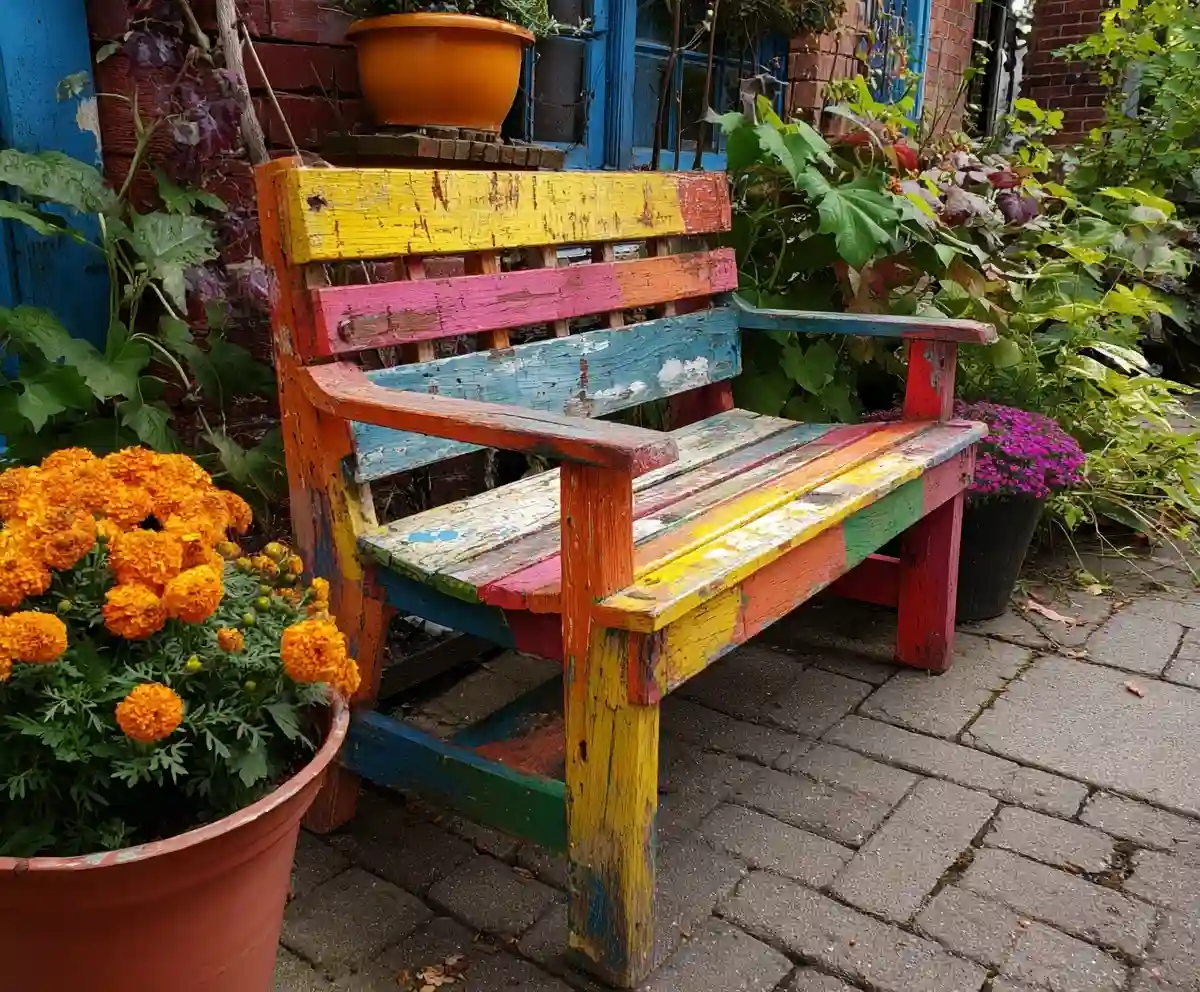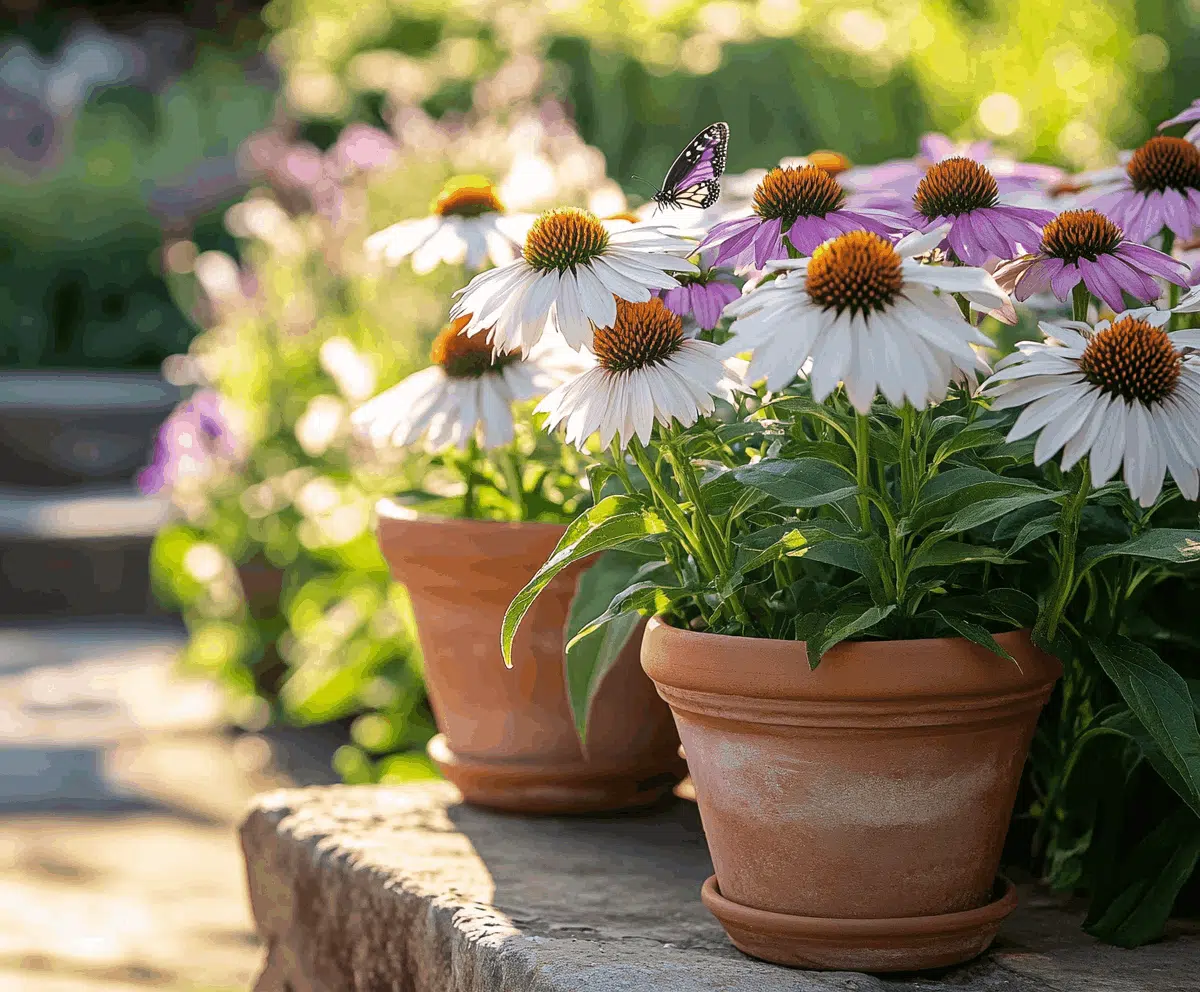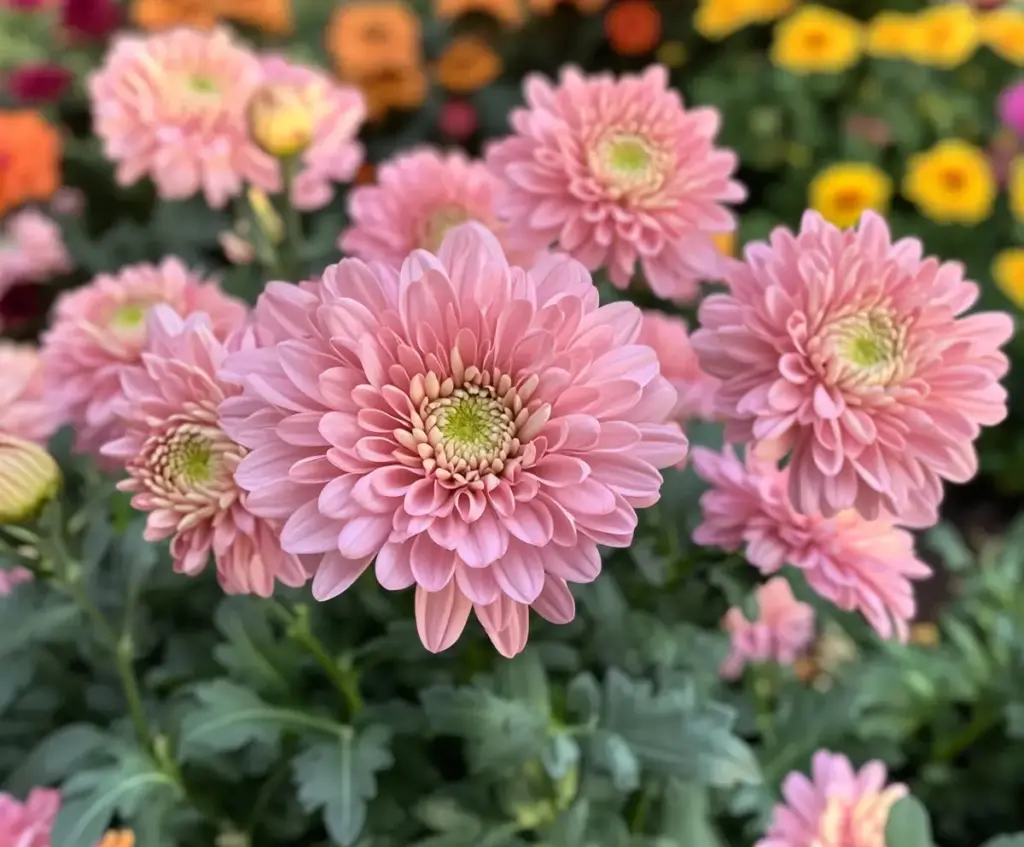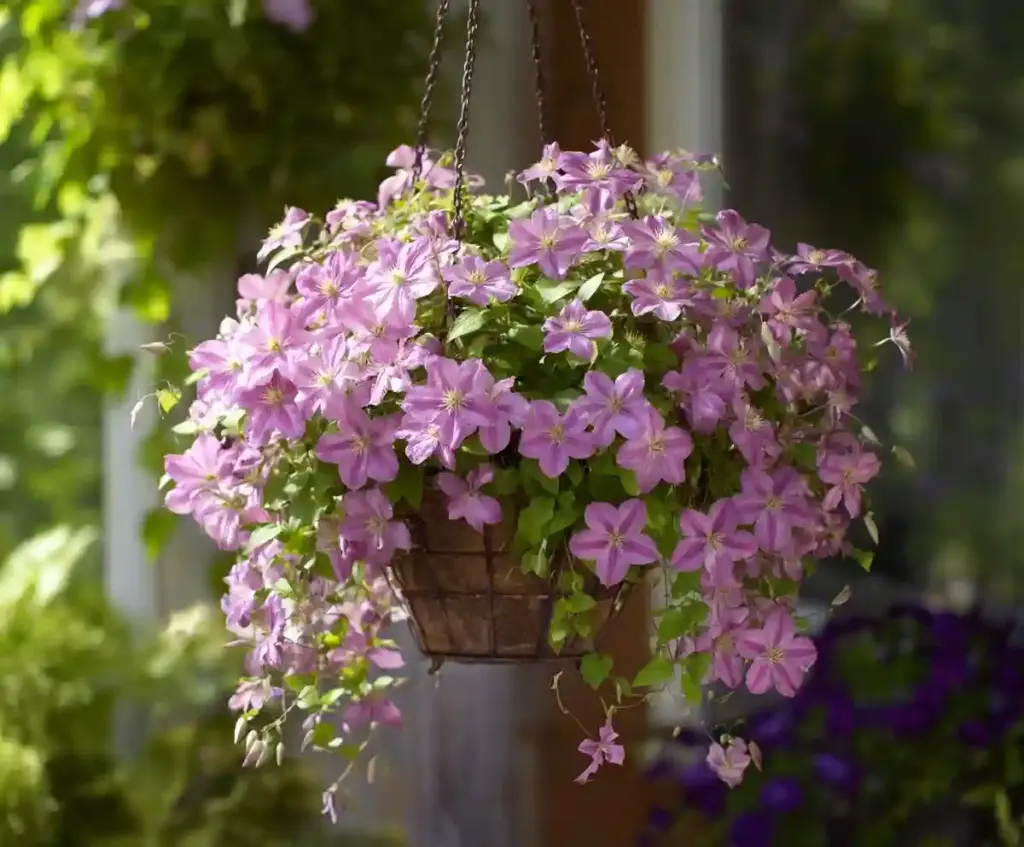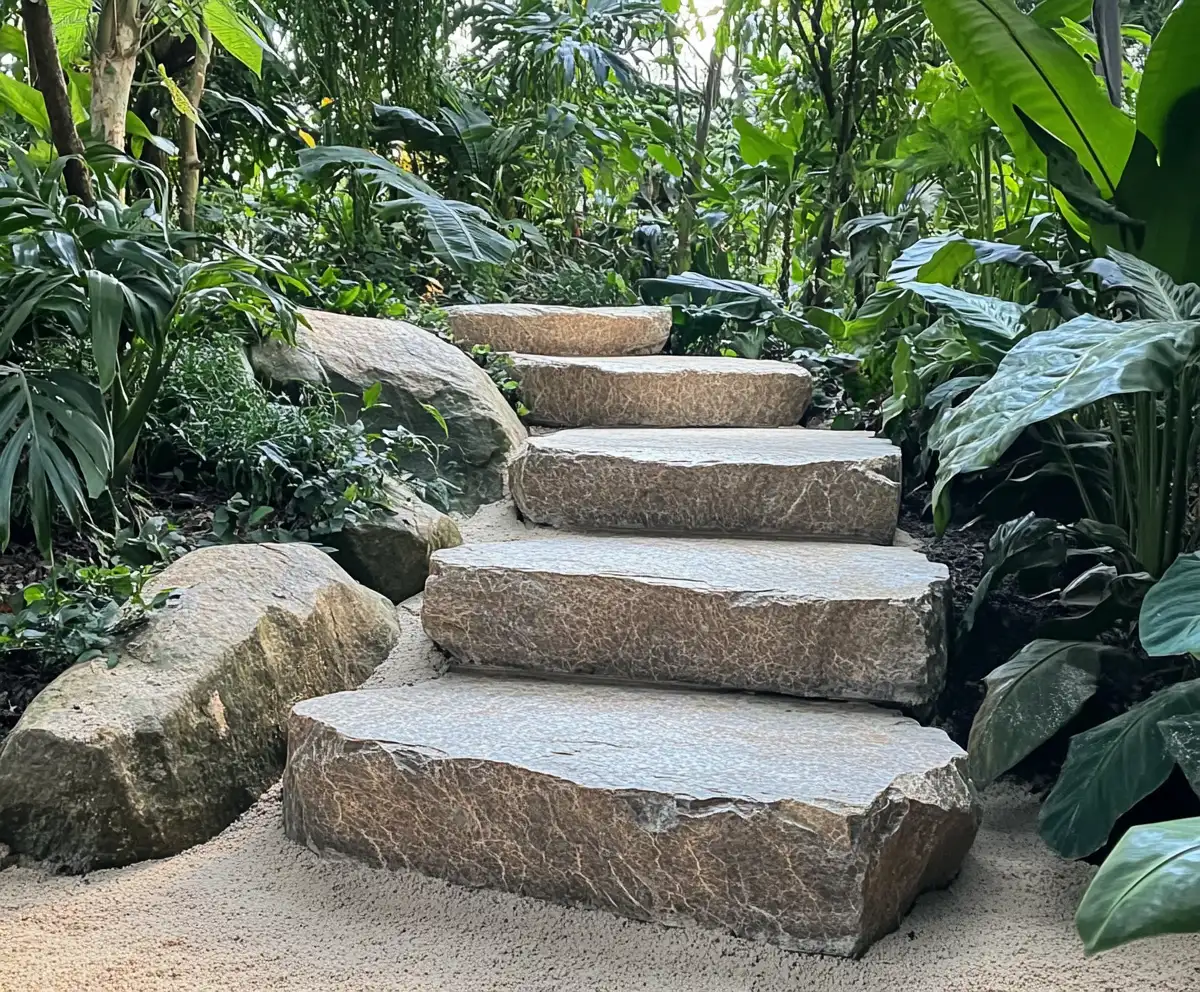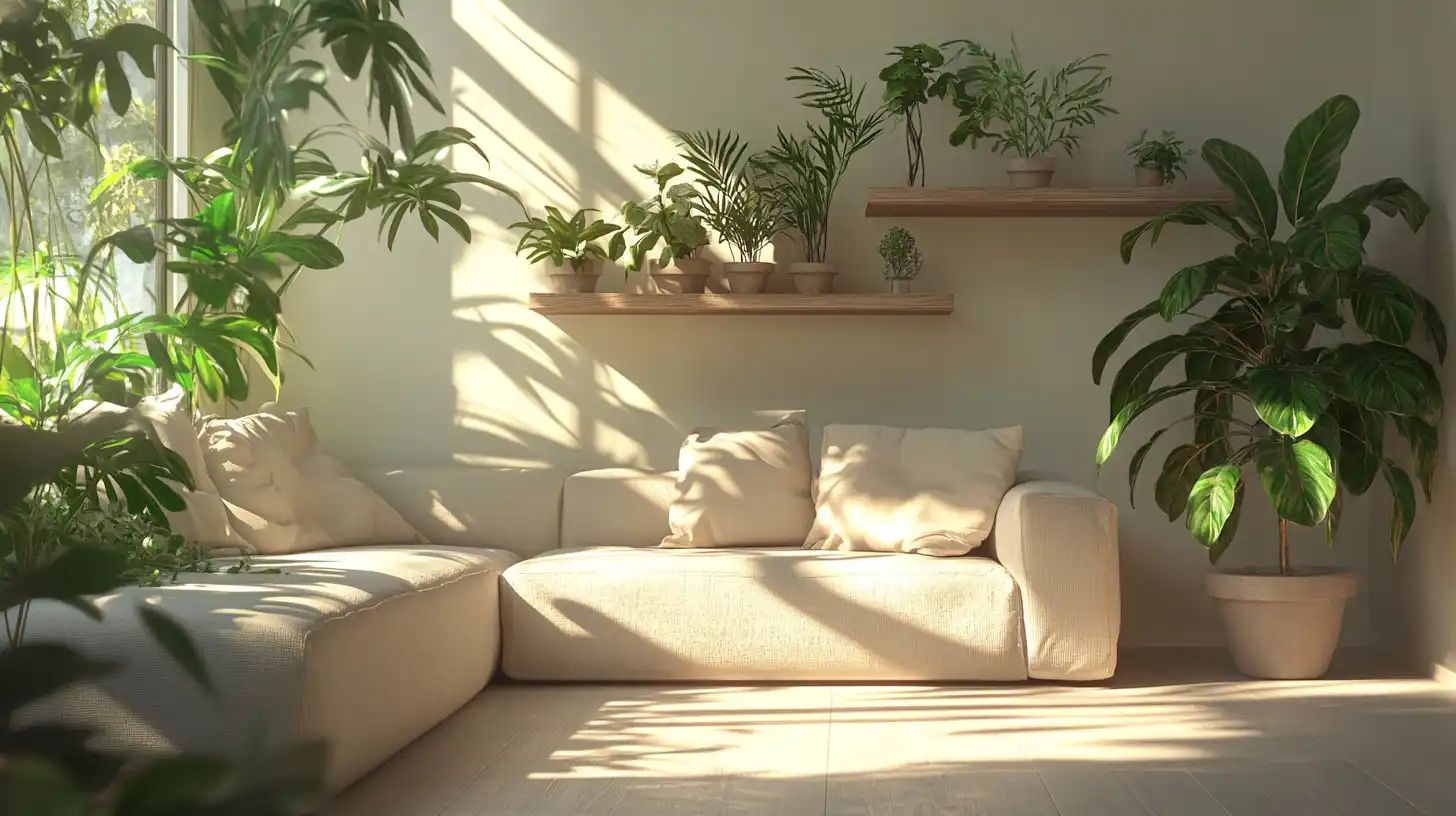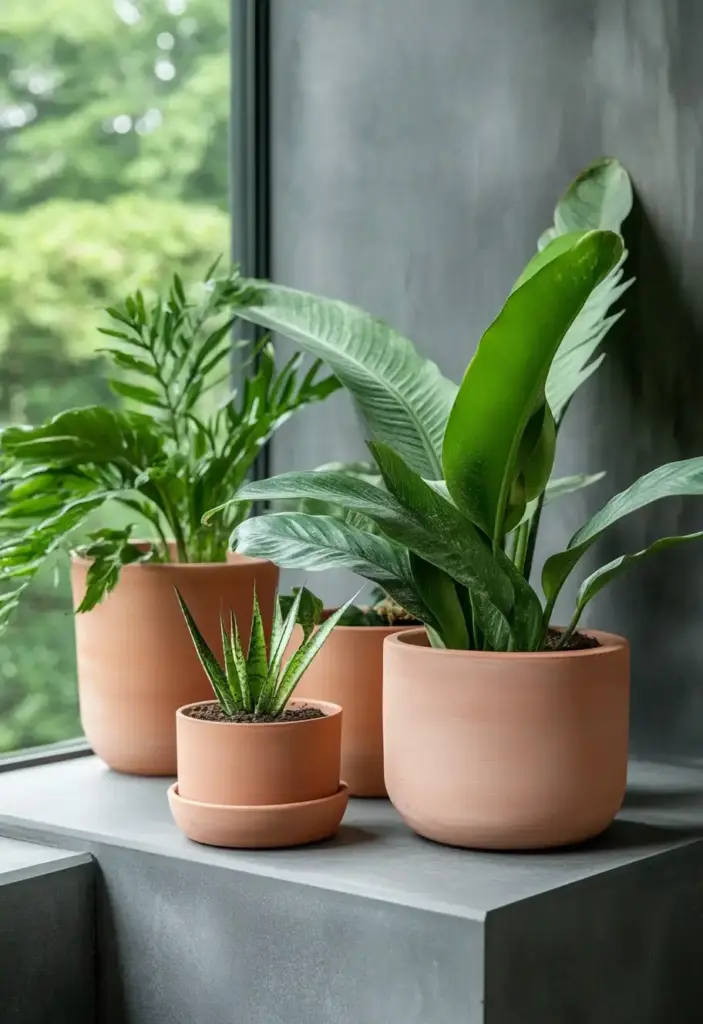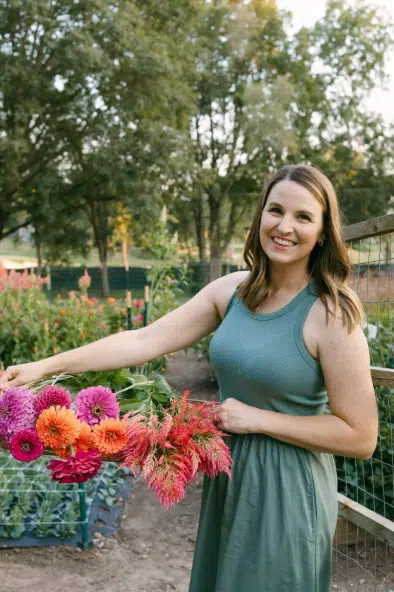Indoor plant styling isn’t just a passing decor trend—it’s a lifestyle choice that brings vitality, beauty, and calm into your everyday environment.
Whether you’re sprucing up a cozy apartment or enhancing a spacious home, how you display greenery can dramatically influence the feel of a room. Well-placed plants can soften hard edges, improve air quality, and add personality.
By combining the right plants with thoughtful design, you can transform any area into a lush, inviting oasis. If you’re just starting out, check out our guide on 5 must-have indoor plants for beginners.
Want to go a step further? Learn how to keep your plants thriving with our tropical indoor plant care guide, or explore specific care tips like caring for ferns indoors.
In this article, you’ll discover 10 expert-approved indoor plant styling tips to elevate your space—no matter your experience level. Let’s turn your home into a plant lover’s paradise—one pot at a time.
Table of Contents
🌱 1. Choose Wisely: Picking the Right Plants
The first step in effective indoor plant styling is selecting plants that thrive in your home’s unique conditions. Think of this as matching personalities—each plant has preferences for light, humidity, and space, just like people do.
✅ Consider Light and Humidity
Before falling in love with a plant at your local nursery, evaluate the environment where you plan to place it.
- Low-light areas? Go for hardy options like the snake plant, ZZ plant, or pothos.
- Bright, sunny spots? Embrace sun-lovers like monstera, fiddle leaf fig, or succulents.
- Bathrooms or kitchens with high humidity? Ferns and calatheas thrive here.
✅ Think About Scale and Growth
A towering rubber plant might look impressive, but will it overpower a tiny corner nook? Choose plants that suit the scale of your room.
- Small spaces: Try baby rubber plant, succulents, or air plants
- Medium to large areas: Use bird of paradise, areca palm, or dracaena
Matching plant size to your available space ensures the greenery feels like a design element, not clutter.
✅ Match Aesthetic & Mood
Just like furniture or artwork, plants contribute to your interior style.
- Sleek modern space? Consider minimalistic plants like sansevieria.
- Boho or eclectic? Opt for trailing plants and whimsical foliage like string of pearls or peperomia.
- Classic or rustic? Use large-leafed, timeless plants like the peace lily or parlor palm.
Choosing wisely creates a harmonious visual flow that’s both intentional and functional.
🪴 2. Elevate with Stylish Planters
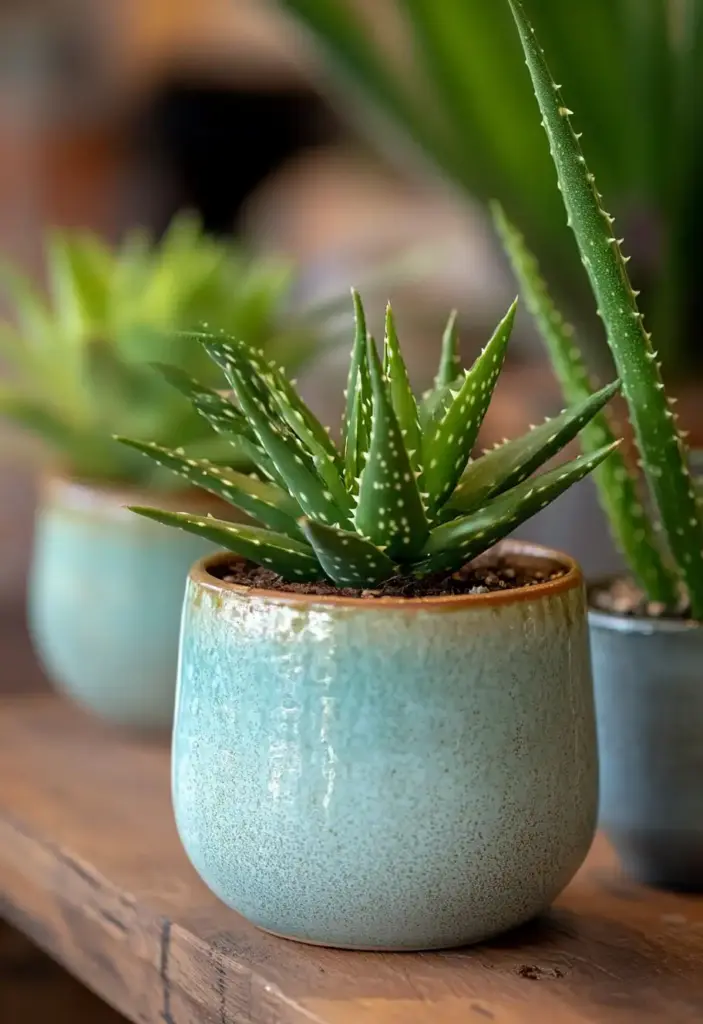
In indoor plant styling, planters are more than just vessels—they’re a design statement that frames your greenery. A thoughtfully chosen pot can highlight your plant’s beauty, complement your décor, and even elevate the entire room’s vibe.
🧱 Choose Materials That Match Your Style
Different planter materials evoke different aesthetics:
- Ceramic pots are clean and versatile—ideal for modern or minimal spaces.
- Terracotta offers earthy warmth and breathability, perfect for boho or rustic interiors.
- Metal adds a contemporary or industrial flair, often great for bold, urban homes.
Mix and match textures to create dimension, or stick to a uniform material for a clean, cohesive look.
🎨 Play with Color, Shape & Finish
Don’t shy away from using planters to add personality:
- Neutral tones (white, beige, gray) let your plants take center stage.
- Bold colors or patterned pots can act as accents to energize a room.
- Glossy glazes provide a polished feel, while matte finishes feel organic and understated.
Combining shapes—like round pots with angular stands—can add contrast and intrigue to your design.
📏 Use Height Strategically
- Use tall planters to draw the eye upward and give height to compact plants.
- Short or wide planters work well on shelves or coffee tables.
- Use planter stands or nesting plant stools to create height layers (more on that in the next tip!).
Remember, your planters should complement—not compete with—your plants and surrounding decor. When balanced just right, they tie your whole space together effortlessly.
🪜 3. Create Layers with Plant Heights
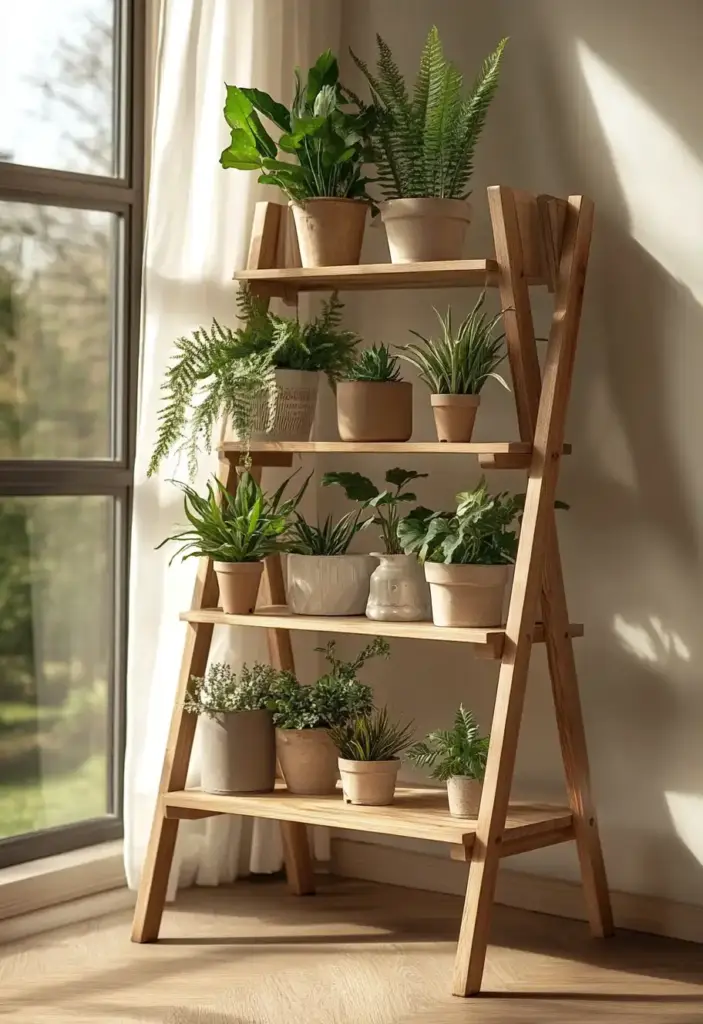
One of the most visually impactful aspects of indoor plant styling is layering. By playing with plant height, you can add depth, fullness, and a natural sense of movement to your space—just like you’d find in a thriving garden.
📏 Use Vertical Variety
Varying plant heights helps guide the eye and makes your space feel more dynamic. Here’s how to do it:
- Tall plants like fiddle leaf figs, bird of paradise, or dracaenas create a commanding presence on the floor or in corners.
- Mid-height plants like rubber plants or peace lilies are great for side tables or stools.
- Low or trailing plants such as ferns, pilea, or string of hearts are ideal for shelves, hanging planters, or windowsills.
🪴 Add Height with Furniture and Accessories
Even if you don’t have tall plants, you can fake the look with creative placement:
- Plant stands can instantly lift shorter plants to eye level.
- Use bookshelves, side tables, or window ledges to layer plants at different levels.
- Try hanging planters to float greenery overhead and fill visual gaps.
🌿 Aim for a Balanced Look
Layering isn’t just about piling in more plants. Think of it like composing a photograph:
- Place taller plants at the back and shorter ones in front.
- Stagger heights diagonally for a sense of motion.
- Use odd-numbered groupings to avoid overly symmetrical or rigid arrangements.
This approach makes your indoor plant styling feel curated yet natural—like your home is gently being taken over by a stylish, serene jungle.
🎨 4. Combine Different Textures and Colors
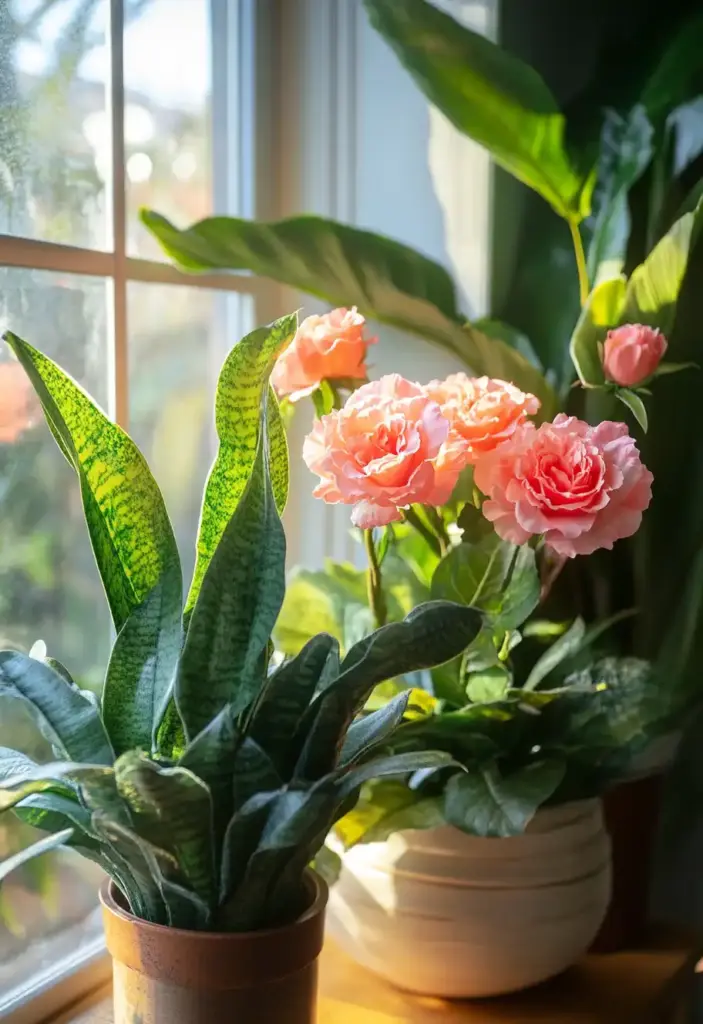
If you want your indoor plant styling to feel rich and layered, don’t just think about shape or size—think about texture and color too. Mixing various foliage types and hues brings your arrangement to life, making it look like a living piece of art.
🌿 Mix Leaf Shapes and Textures
Every plant has a distinct texture. When you combine them thoughtfully, you add natural drama and movement to your space. Try pairing:
- Glossy leaves like those on rubber plants with matte, fuzzy leaves like African violets.
- Broad foliage from monsteras with spiky or fine-textured plants like asparagus fern or spider plant.
- Trailing vines alongside upright or bushy types.
This interplay of textures gives depth to your design and prevents your indoor garden from looking flat or monotonous.
🎨 Play with Plant Colors
Green may be the dominant theme, but there’s a surprising variety within that spectrum—and beyond:
- Use deep emerald or blue-green plants for a calming, sophisticated feel.
- Add pops of color with purple oxalis, pink nerve plants, or red anthuriums.
- Contrast dark-leafed plants (like black raven ZZ) with lime or variegated leaves for visual tension.
This kind of thoughtful color curation keeps your setup interesting and cohesive—especially when tied to your interior palette.
🧘♀️ Match Mood with Tone
- Want a calm, spa-like vibe? Stick to monochromatic greens with soft textures.
- Want to energize a room? Go for bold foliage contrasts and flowering plants.
- Pair with neutral walls and soft lighting to make the plant textures really pop.
Combining texture and color takes your indoor plant styling from basic to breathtaking.
🌿 5. Use Plant Groupings for Impact
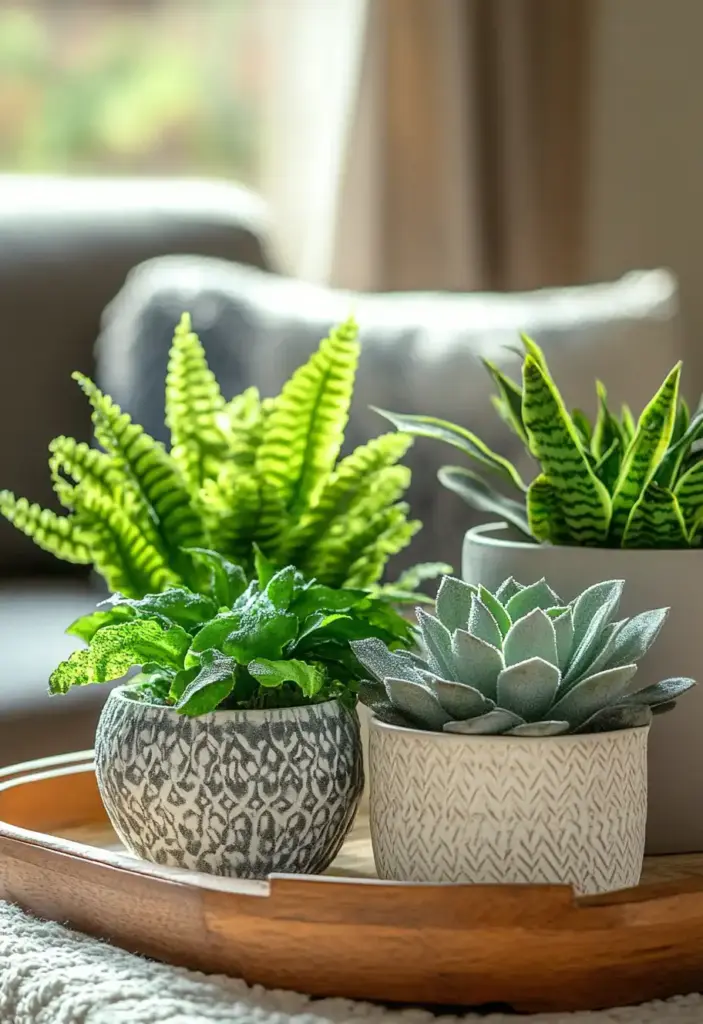
Grouping plants together isn’t just about saving space—it’s a design trick that amplifies the visual impact of your indoor plant styling. When done right, grouped plants can become a focal point, a conversation starter, or even a piece of living art.
🔢 Follow the Rule of Odds
Designers often swear by odd numbers for creating natural, balanced arrangements. Try grouping:
- 3 or 5 plants together for a casual, effortless vibe.
- Keep the group tight enough to feel connected, but not crowded.
This layout tends to feel more organic and less forced than even-numbered pairings.
📏 Vary Plant Size and Type
For a dynamic display:
- Combine tall, medium, and short plants in one area.
- Use a mix of leaf shapes, colors, and growth habits—such as upright snake plants beside a trailing pothos and a bushy peperomia.
Contrast draws the eye and keeps the display interesting, while the shared theme of “living greenery” keeps it unified.
🪞 Use Trays or Stands for Cohesion
- Arrange your group on a decorative tray to contain the display and add polish.
- Use tiered stands or nesting stools to elevate certain plants and create dimension.
- Even simple wooden planks or books can be used to build levels and tie a grouping together.
Groupings give you a chance to experiment and express personality through placement, all while creating the lush, layered look that defines modern indoor plant styling.
🪶 6. Hanging Plants for Vertical Interest
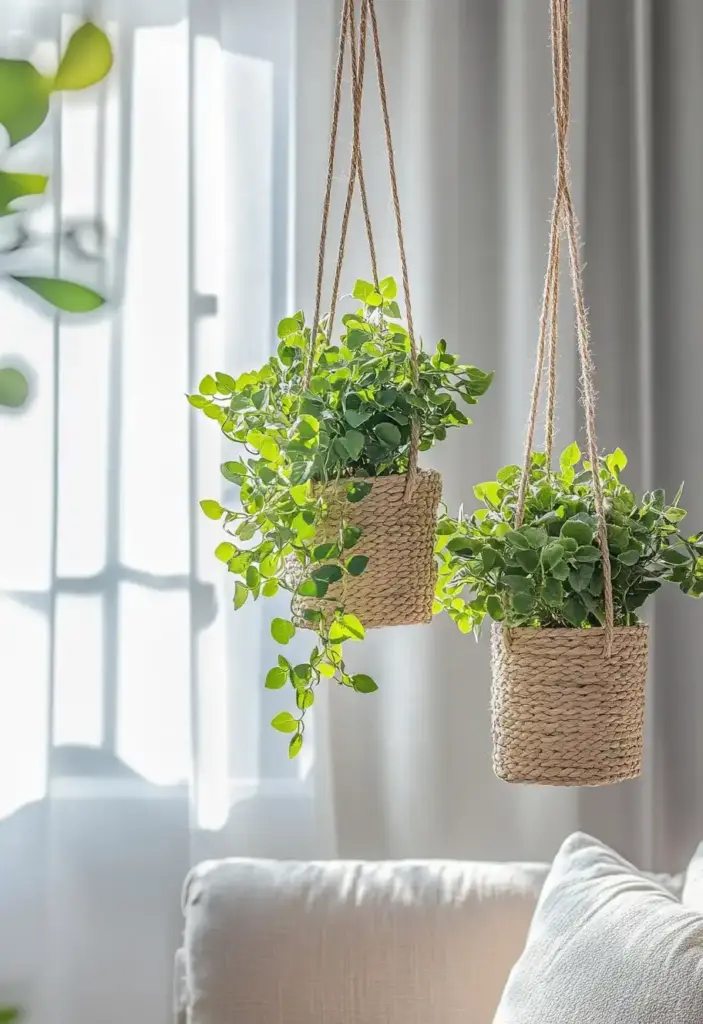
When it comes to indoor plant styling, don’t stop at tabletops and shelves—look up. Hanging plants are an excellent way to add dimension, soften hard corners, and utilize vertical space that often goes overlooked.
🪴 Perfect for Small or Awkward Spaces
If you’re short on floor space or have odd nooks that feel bare, hanging plants are your solution.
- Try placing them in corners, above kitchen sinks, or near window frames.
- Ceiling hooks, macramé hangers, and wall-mounted planters all help create floating greenery.
🌿 Choose the Right Trailing Plants
Some plants are made to dangle beautifully:
- Pothos – forgiving and fast-growing with lovely cascading vines.
- String of hearts – delicate and romantic, great for boho vibes.
- Spider plant – arching foliage with baby “spiderettes” that dangle charmingly.
- Boston ferns – lush and dramatic when suspended overhead.
These plants add movement and flow, making your room feel more dynamic and alive.
🌫️ Create an Airy, Forest-Like Feel
Strategically hung plants draw the eyes upward, making ceilings seem taller and rooms feel more open. They also:
- Soften the hard lines of ceilings and corners.
- Bring a canopy effect to spaces like reading nooks, bathrooms, or bedrooms.
- Work wonderfully in multiples—hang several at staggered heights for a cascading jungle effect.
This tip brings both style and functionality, turning overlooked spaces into green, serene corners of beauty.
🌳 7. Incorporate Natural Elements
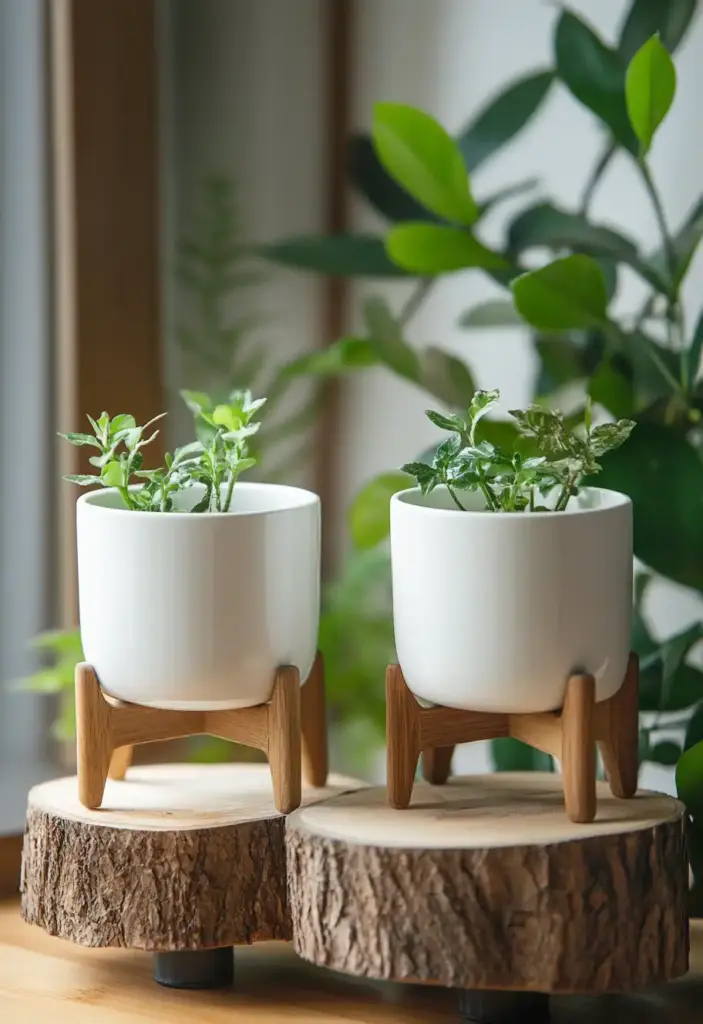
A key principle of successful indoor plant styling is making your greenery feel like an extension of nature—not just decor. By incorporating raw, natural materials into your design, you enhance the soothing effect of plants and create a harmonious indoor-outdoor connection.
🪵 Use Organic Materials
Natural textures anchor your plant styling and give it authenticity. Try integrating:
- Wooden stands or trays – great for warmth and rustic appeal
- Stone or clay pots – earthy and grounding, ideal for boho or wabi-sabi aesthetics
- Wicker baskets – perfect for hiding plastic nursery pots and adding texture
- Metal elements – think wrought iron plant stands or aged copper pots for vintage charm
These elements bring out the natural beauty of your plants without competing for attention.
🧘 Create a Sense of Balance
Natural materials help strike a balance between plant and furniture. Think:
- A reclaimed wood bench with potted ferns
- A stone shelf with minimalist greenery
- A jute rug that complements leafy textures without overwhelming them
They create subtle visual links between the plant world and the rest of your room.
🔁 Repeat Themes Throughout the Room
Use the same natural materials across different styling elements to unify the space. For example:
- Match a wooden planter with wooden picture frames or furniture legs
- Repeat brass or matte black metals in both planters and light fixtures
- Use textured pots that echo your fabric choices (linen, rattan, etc.)
This creates a thoughtfully layered aesthetic that feels intentional, not random.
When plants are paired with natural elements, the result is a tranquil, cohesive space that feels like a breath of fresh air—inside your own home.
🎨 8. Use Color Theory to Your Advantage
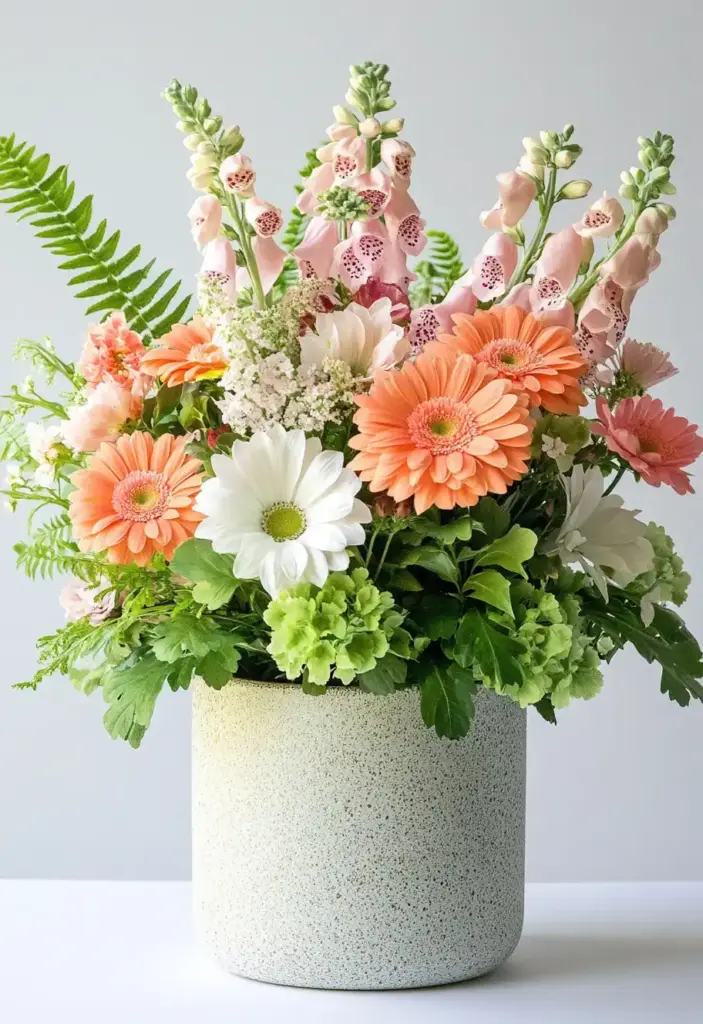
Color isn’t just for walls and pillows—it’s a powerful tool in indoor plant styling. Understanding how plant colors interact with your home’s palette can help set the mood, enhance design flow, and make your greenery pop in all the right ways.
🧘♀️ Choose a Color Mood
Think about the emotional tone you want in the room:
- Monochromatic greens (light to deep tones) offer a soothing, spa-like ambiance—ideal for bedrooms, bathrooms, or meditation spaces.
- Bold contrasts like deep green leaves against white pots or vibrant backgrounds create energy and drama.
- Pastel-colored plants (like pink aglaonema or variegated calathea) soften a space and add visual interest without overwhelming it.
🎯 Match or Contrast with Decor
Your plants should complement your existing interior style. Here’s how:
- In a neutral or minimalist room, use brightly colored plants or variegated leaves for subtle contrast.
- In a color-rich or eclectic space, go with solid green foliage to balance visual intensity.
- Use pots and accessories to mirror or contrast dominant tones in your furniture, rugs, or artwork.
This brings a sense of harmony that feels intentional and refined.
🌈 Use Color to Highlight
Let color work as a spotlight:
- A bright red anthurium draws the eye to a dark corner.
- A variegated rubber plant adds life to a white or beige shelf.
- A dark green monstera anchors a space with light-colored walls or flooring.
Whether you want to create a tranquil escape or a lively social space, using color thoughtfully can elevate your indoor plant styling from casual to curated.
🌴 9. Create a Focal Point with Large Plants
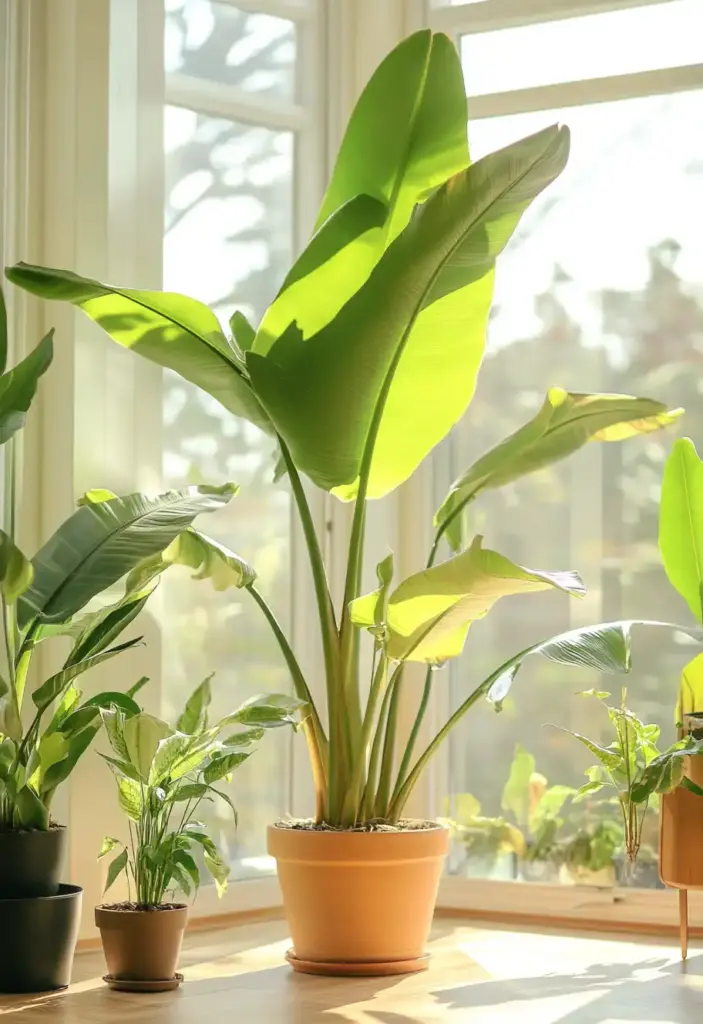
In any well-styled room, there’s usually one standout feature—and in the world of indoor plant styling, that star can be a large statement plant. These towering beauties not only draw attention, but they also ground the space and anchor your overall design.
🌿 Go Big with Purpose
Not every room needs a massive plant, but when used intentionally, large plants can:
- Fill empty corners that feel awkward or unbalanced
- Add height to rooms with high ceilings
- Serve as a natural divider in open floor plans
Choose plants with dramatic silhouettes like:
- Fiddle leaf fig – tall, sculptural, and photogenic
- Parlor palm or areca palm – add texture and a tropical vibe
- Bird of paradise – with banana-like leaves that fan out elegantly
🪟 Place Them Strategically
Large plants do best when positioned thoughtfully:
- Near windows where they’ll get adequate light (and be naturally spotlighted)
- At the end of a hallway to draw the eye
- In entryways to make a bold, welcoming impression
- Beside a sofa or reading chair to soften the space with greenery
Let the plant be the star, but complement it with minimal decor—perhaps a neutral planter, soft lighting, or a woven basket base.
🧘♂️ Keep It Balanced
Balance the presence of a large plant by:
- Surrounding it with a few smaller plants or low furniture
- Keeping wall art minimal nearby so the eye isn’t overwhelmed
- Using symmetry: for example, balance a tall plant on one side of the room with a tall floor lamp or bookshelf on the other
A large, well-placed plant instantly transforms your indoor plant styling from subtle to striking—and gives your room a natural focal point that feels alive and intentional.
🖼 10. Accessorize with Garden-Inspired Decor
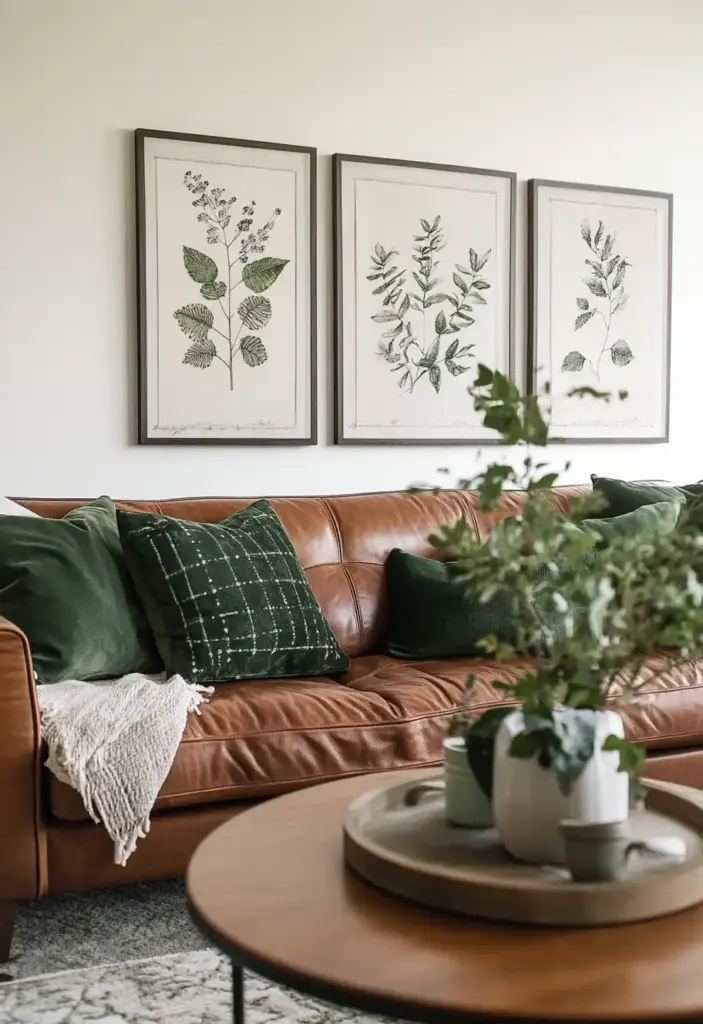
The final secret to elevated indoor plant styling isn’t another plant—it’s how you support your greenery with decorative elements that echo and enhance your plant aesthetic. Done right, accessories bring cohesion, personality, and even storytelling into your green space.
🖼 Add Botanical Artwork or Prints
Wall decor can reinforce your plant theme without competing for space:
- Hang vintage botanical prints for a classic, educational feel.
- Use modern abstract plant art to match contemporary decor.
- Frame pressed leaves or DIY plant sketches for a personalized touch.
Keep it subtle and in tune with the tones of your plants and furniture.
🌿 Include Natural-Themed Objects
Enhance your indoor jungle vibe with garden-inspired decor:
- Terrariums – miniature ecosystems that double as eye-catching table centerpieces
- Glass cloches – perfect for small air plants or mossy displays
- Wooden or rattan trays – group your potted plants and accessories together
- Lanterns, watering cans, or ceramic mushrooms – playful yet chic nature-inspired accents
These objects add character and texture while complementing your greenery, not distracting from it.
🧩 Layer Accessories Mindfully
The key here is balance—don’t overcrowd. Let your plants remain the star:
- Choose decor that shares the same color tones or textures as your planters and furniture
- Keep negative space in mind so everything feels airy and not cluttered
- Layer in accessories near plants to create styled vignettes—for example, a small fern, a candle, and a botanical book grouped on a side table
Accessories help tie the whole room together, reinforcing your styling choices and making the space feel intentional, curated, and complete.
✅ Conclusion
Indoor plant styling is more than just a passing trend—it’s a personal, creative expression that improves air quality and brings tranquility into your everyday life. By thoughtfully mixing the right houseplants, stylish containers, natural textures, and decorative accessories, you can transform any interior into a living, breathing sanctuary. If you’re eager to go beyond styling, explore our tips on growing ferns as houseplants or discover the best indoor plants for beginners to get started.
Whether you’re just starting your plant journey or looking to refine your green haven, these 10 tips will elevate your space with ease and intention. Begin small or style boldly—but most importantly, make your home a place where nature and comfort coexist in perfect harmony.
❓ Frequently Asked Questions (FAQ) About Indoor Plant Styling
🌿 What is indoor plant styling?
Indoor plant styling is the art of arranging and displaying houseplants in a way that complements your home’s interior design. It includes choosing the right plants, planters, placements, and accessories to create a cohesive, visually pleasing space.
🪴 How do I choose the best indoor plants for my home?
Start by considering the light and humidity in each room. Low-light plants like snake plant or pothos are great for darker areas, while bright-light lovers like monstera or fiddle leaf fig thrive near windows. Also factor in plant size, maintenance level, and your overall decor style.
🧱 How can I style indoor plants in a small space?
Use vertical space by incorporating hanging planters, wall-mounted pots, or tiered plant stands. Stick to a few statement pieces and use cohesive planters to avoid a cluttered look. Grouping small plants on shelves or window sills also works well.
🎨 What colors work best with indoor plants?
Green is a neutral that pairs beautifully with most color schemes. Use monochromatic green tones for a calming effect or mix in colorful foliage and variegated leaves for contrast. Match or complement your plant pots to your existing room colors for harmony.
🪴 Should I group indoor plants together?
Yes! Grouping plants enhances visual impact and creates a fuller, lush look. Use odd numbers (like 3 or 5) and vary plant height, texture, and pot style. Grouping also helps create microclimates that can benefit humidity-loving plants.
🌿 Love gardening inspiration? Follow me on Pinterest for bold plant ideas, tips, and seasonal color!
More Posts
